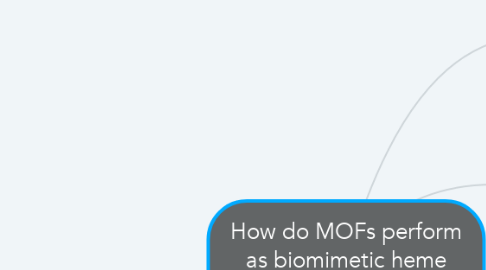How do MOFs perform as biomimetic heme enzyme model systems?
by Mallory Smith


1. Goals
1.1. Trap reactive intermediates
2. Questions
2.1. How can axial ligands be exchanged?
2.2. How to probe the coordination sphere?
2.3. How can relevant donor ligands be anchored?
3. Synthesis of Models
3.1. Iron Installation
3.1.1. Pre-synthesis
3.1.1.1. Only ferric species can be obtained this way
3.1.1.1.1. Ferrous porphyrins are air-sensitive
3.1.1.1.2. Makes better crystals than the non-metallated porphyrin
3.1.2. Post-synthesis
3.1.2.1. Mandatory for ferrous.
3.1.2.1.1. Ferric chloride unavoidable.
3.1.2.2. Ferric species potentially reducable
3.1.2.2.1. Some methods incompatible with MOF
3.2. Axial Ligand Exchange
3.2.1. Chloride abstraction
3.2.2. Thiolate Installation
3.2.2.1. Instability of simple soluble complexes
3.2.2.1.1. Tethered/Tail Thiolato Fe-porphyrins
3.2.3. Non-Cooordinationg Ligands
3.2.3.1. The problem with Ag salts
3.2.3.1.1. Alternative Methods
3.2.4. Post-synthesis
3.2.4.1. Mandatory for ferrous.
3.2.4.1.1. Ferric chloride unavoidable.
4. Fe sphere
4.1. Coordination number
4.2. Coordinating Species
4.3. Oxidation State
4.4. Percent of Saturated Sites
4.5. Spin
4.6. Methods
4.6.1. EPR
4.6.2. UV-VIS-DR
4.6.3. IR
